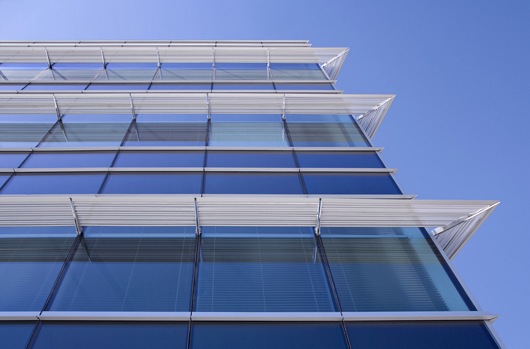Green building is the practice of creating structures and using processes that are environmentally responsible and resource-efficient throughout a building’s life-cycle from siting to design, construction, operation, maintenance, renovation and deconstruction. This practice expands and complements the classical building design concerns of economy, utility, durability, and comfort. Green building is also known as a sustainable or high performance building. However, there have been instances where overly optimistic energy modeling helps cause the “energy performance gap,” a problem that has become frustratingly familiar in green building projects.
Many of the green buildings do not live up to hype on energy efficiency. Analysts call it the “energy performance gap” — the difference between promised energy savings in green buildings and the actual savings delivered. The problem, researchers say, is inept modeling systems that fail to capture how buildings really work. Richard Conniff who is a National Magazine Award-winning writer and whose articles have appeared in The New York Times, Smithsonian, The Atlantic, National Geographic, and other publications says, "Buildings account for 40 percent of climate change emissions and are the fastest growing source of emissions."
The performance gap refers to the failure of energy improvements, often undertaken at great expense, to deliver some (or occasionally all) of the promised savings. A study last year of refurbished apartment buildings in Germany, for instance, found that they missed the predicted energy savings by anywhere from 5 to 28 percent. In Britain, an evaluation of 50 “leading-edge modern buildings,” from supermarkets to health care centers, reported that they “were routinely using up to 3.5 times more energy than their design had allowed for” — and producing on average 3.8 times the predicted carbon emissions.
In an article published in Yale E360, Conniff says, "The performance gap is “a vast, terrible enormous problem,” in the words of one building technology specialist, and that’s not an exaggeration. Though much of the public concern about energy consumption and climate change focuses on automotive miles-per-gallon, the entire transport sector — including trains, planes, ships, trucks, and cars — accounts for just 26 percent of U.S. climate change emissions. Buildings come in at 40 percent, and they are the fastest growing source of emissions, according to the U.S. Green Building Council."
The organization that gives LEED certification is now requiring that developers post actual energy usage on an online data base. Read full article here: https://e360.yale.edu/features/why-dont-green-buildings-live-up-to-hype-on-energy-efficiency
Many of the green buildings do not live up to hype on energy efficiency. Analysts call it the “energy performance gap” — the difference between promised energy savings in green buildings and the actual savings delivered. The problem, researchers say, is inept modeling systems that fail to capture how buildings really work. Richard Conniff who is a National Magazine Award-winning writer and whose articles have appeared in The New York Times, Smithsonian, The Atlantic, National Geographic, and other publications says, "Buildings account for 40 percent of climate change emissions and are the fastest growing source of emissions."
The performance gap refers to the failure of energy improvements, often undertaken at great expense, to deliver some (or occasionally all) of the promised savings. A study last year of refurbished apartment buildings in Germany, for instance, found that they missed the predicted energy savings by anywhere from 5 to 28 percent. In Britain, an evaluation of 50 “leading-edge modern buildings,” from supermarkets to health care centers, reported that they “were routinely using up to 3.5 times more energy than their design had allowed for” — and producing on average 3.8 times the predicted carbon emissions.
In an article published in Yale E360, Conniff says, "The performance gap is “a vast, terrible enormous problem,” in the words of one building technology specialist, and that’s not an exaggeration. Though much of the public concern about energy consumption and climate change focuses on automotive miles-per-gallon, the entire transport sector — including trains, planes, ships, trucks, and cars — accounts for just 26 percent of U.S. climate change emissions. Buildings come in at 40 percent, and they are the fastest growing source of emissions, according to the U.S. Green Building Council."
The organization that gives LEED certification is now requiring that developers post actual energy usage on an online data base. Read full article here: https://e360.yale.edu/features/why-dont-green-buildings-live-up-to-hype-on-energy-efficiency



